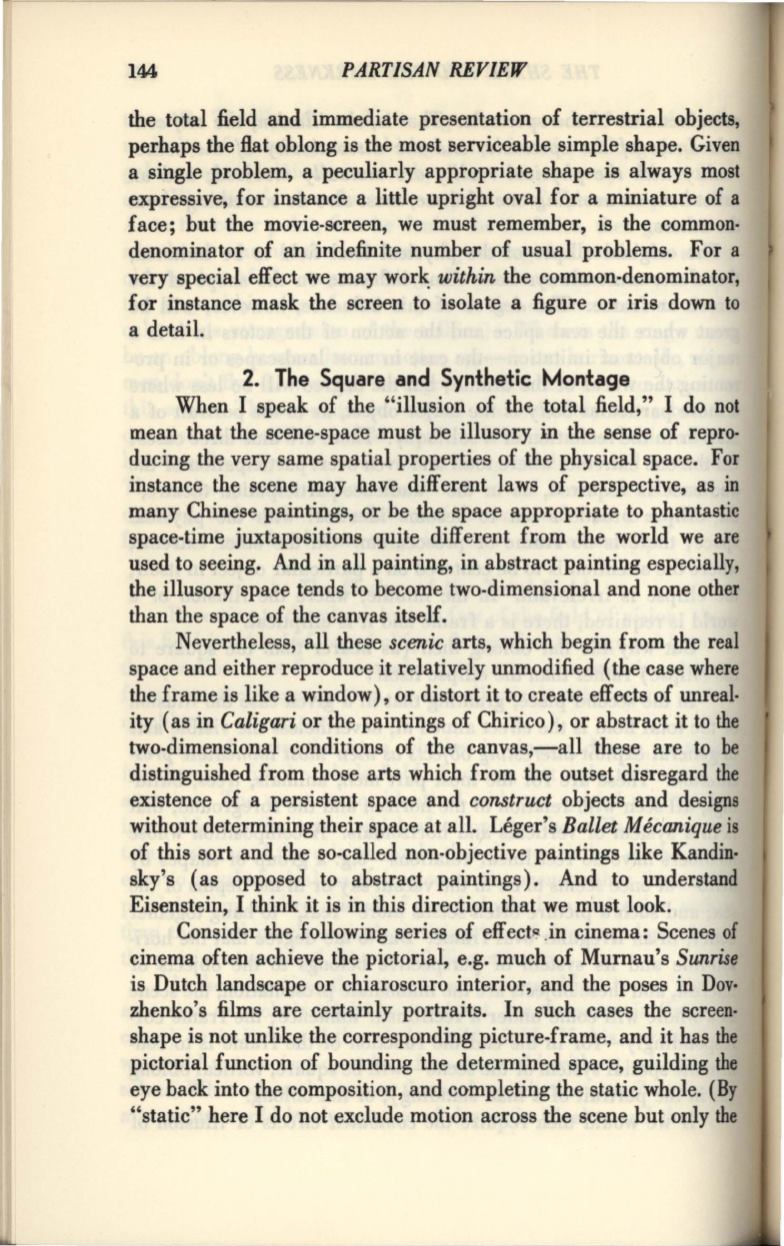
144
PARTISAN REVIEW
the total field and immediate presentation of terrestrial objects,
perhaps the fiat oblong is the most serviceable simple shape. Given
a single problem, a peculiarly appropriate shape is always most
expressive, for instance a little upright oval for a miniature of a
face; but the movie-screen, we must remember, is the common–
denominator of an indefinite number of usual problems. For a
very special effect we may
wor~
within
the common-denominator,
for instance mask the screen to isolate a figure or iris down to
a detail.
2. The Square and Synthetic Montage
When I speak of the "illusion of the total field," I do not
mean that the scene-space must be illusory in the sense of repro–
ducing the very same spatial properties of the physical space. For
instance the scene may have different laws of perspective, as in
many Chinese paintings, or be the space appropriate to phantastic
space-time juxtapositions quite different from the world we are
used to seeing. And in all painting, in abstract painting especially,
the illusory space tends to become two-dimensional and none other
than the space of the canvas itself.
Nevertheless, all these
scenic
arts, which begin from the real
space and either reproduce it relatively unmodified (the case where
the frame is like a window), or distort it to create effects of unreal–
ity (as in
Caligari
or the paintings of Chirico), or abstract it to the
two-dimensional conditions of the canvas,-all these are to be
distinguished from those arts which from the outset disregard the
existence of a persistent space and
construct
objects and designs
without determining their space at all. Leger's
Ballet Mecanique
is
of this sort and the so-called non-objective paintings like Kandin–
sky's (as opposed to abstract paintings). And to understand
Eisenstein, I think it is in this direction that we must look.
Consider the following series of
effect~>.
.in cinema: Scenes
of
cinema often achieve the pictorial, e.g. much of Murnau's
Sunrise
is Dutch landscape or chiaroscuro interior, and the poses in Dov·
zhenko's films are certainly portraits. In such cases the screen·
shape is not unlike the corresponding picture-frame, and it has the
pictorial function of bounding the determined space, guilding the
eye back into the composition, and completing the static whole.
(By
"static" here I do not exclude motion across the scene but only the


